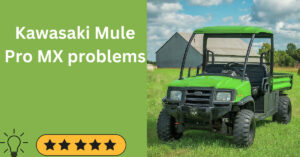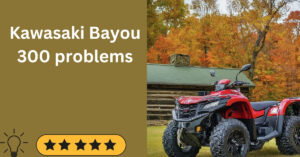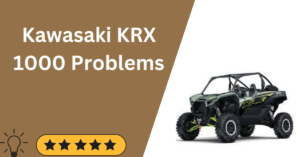When it comes to off-road adventures and rugged utility, the CFMOTO UForce 1000 is a formidable machine. However, like any vehicle, it’s not immune to issues that can arise from time to time.
In this article, we’ll dive into the 6 most common CFMOTO UForce 1000 problems and provide practical solutions to keep your ride running smoothly.
What are the most common problems with cfmoto uforce 1000?
The most common Cfmoto Uforce 1000 problems are
- Electrical Gremlins
- Overheating
- Transmission Trouble
- Unusual Noises
- Fuel System Hiccups
- Braking Issues
Also read Cfmoto Uforce 1000 Reviews
8 Common Cfmoto Uforce 1000 Problems with Solutions:
Here we discuss the problems with cfmoto uforce 1000 and also their easy solutions.
1. Electrical Gremlins
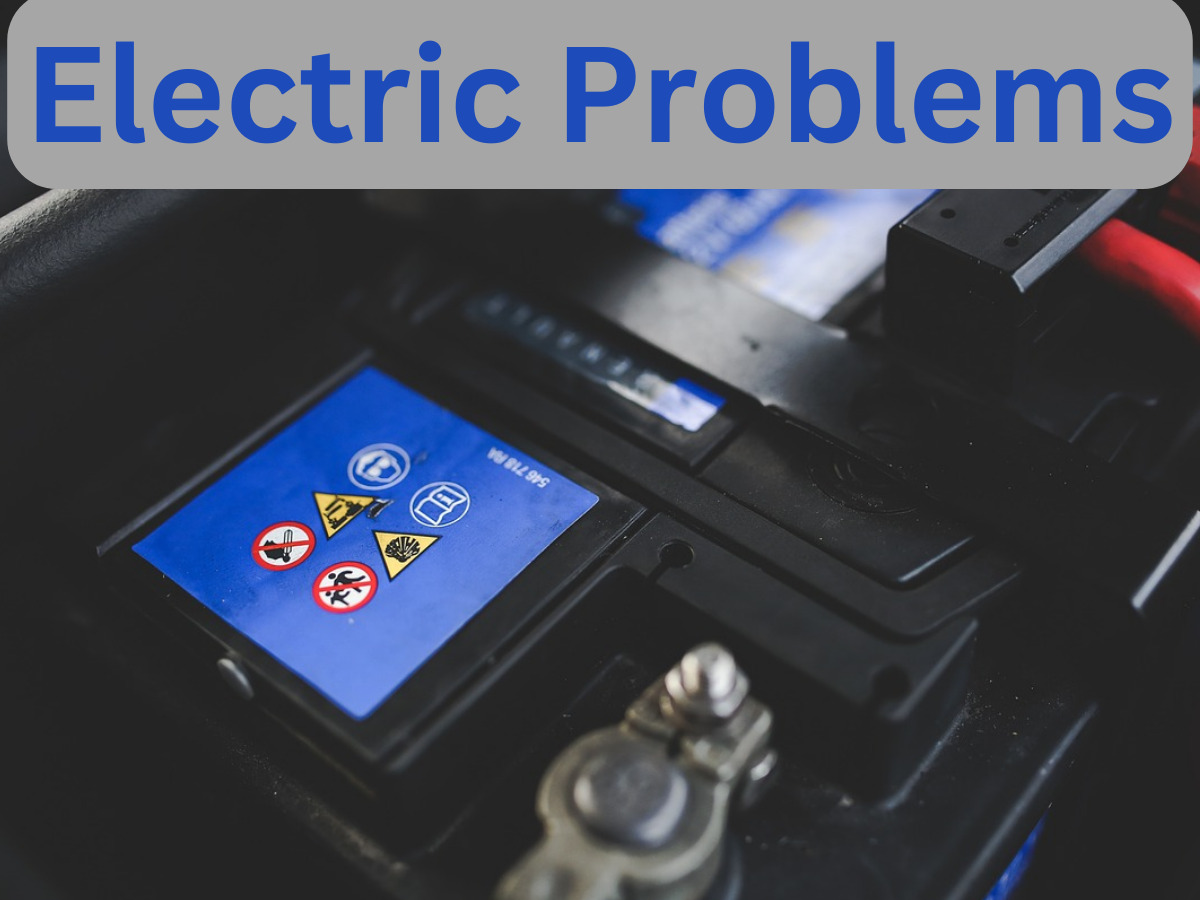
“Electrical Gremlins” typically refer to intermittent or mysterious electrical issues that can occur in vehicles, including ATVs like the CFMOTO Uforce 1000. These issues can be frustrating to diagnose and fix because they often appear and disappear unpredictably, making them difficult to replicate and troubleshoot. Electrical gremlins can manifest as problems with lights, power delivery, starting, and various electronic components.
Common Symptoms of Electrical Gremlins in CFMOTO Uforce 1000:
- Intermittent Starting Issues: The vehicle might not start consistently, even though the battery is in good condition.
- Lights Flickering or Dimming: Headlights, taillights, or dashboard lights may flicker or dim unexpectedly while driving.
- Accessory Malfunctions: Electrical components like the radio, windshield wipers, or power windows might malfunction sporadically.
- Sudden Engine Cutouts: The engine might shut off abruptly while driving due to an electrical interruption.
- Battery Draining: The battery might discharge faster than usual due to a parasitic drain when the vehicle is off.
Steps to Diagnose and Solve Electrical Gremlins in CFMOTO Uforce 1000:
- Visual Inspection: Check for loose, corroded, or damaged wires and connectors. Inspect the battery terminals for tight connections and corrosion.
- Battery Test: Ensure the battery is fully charged and functioning properly. A weak or failing battery can lead to various electrical issues.
- Fuse Check: Inspect all fuses and replace any that are blown. Fuses protect electrical circuits from overloads and can cause intermittent issues if they’re faulty.
- Ground Connections: Clean and tighten all ground connections, as poor grounds can lead to erratic electrical behavior.
- Component Testing: If a specific electrical component is acting up (e.g., lights, wipers), test it individually to identify if it’s the source of the problem.
- Wiggle Test: While the vehicle is running, gently wiggle wires and connectors to see if the issue worsens or improves. This can help pinpoint loose connections.
- Scan for Error Codes: If your CFMOTO Uforce 1000 has an onboard diagnostics system, use a code scanner to identify any stored error codes that could provide clues.
- Aftermarket Accessories: If you’ve added any aftermarket electronics, they could be causing conflicts. Temporarily disconnect them to see if the issues persist.
- Professional Help: If you can’t identify or solve the issue, consider taking the vehicle to a qualified mechanic or dealership with experience in CFMOTO vehicles.
Also Read : Cfmoto Uforce 800 Problems
2. Overheating
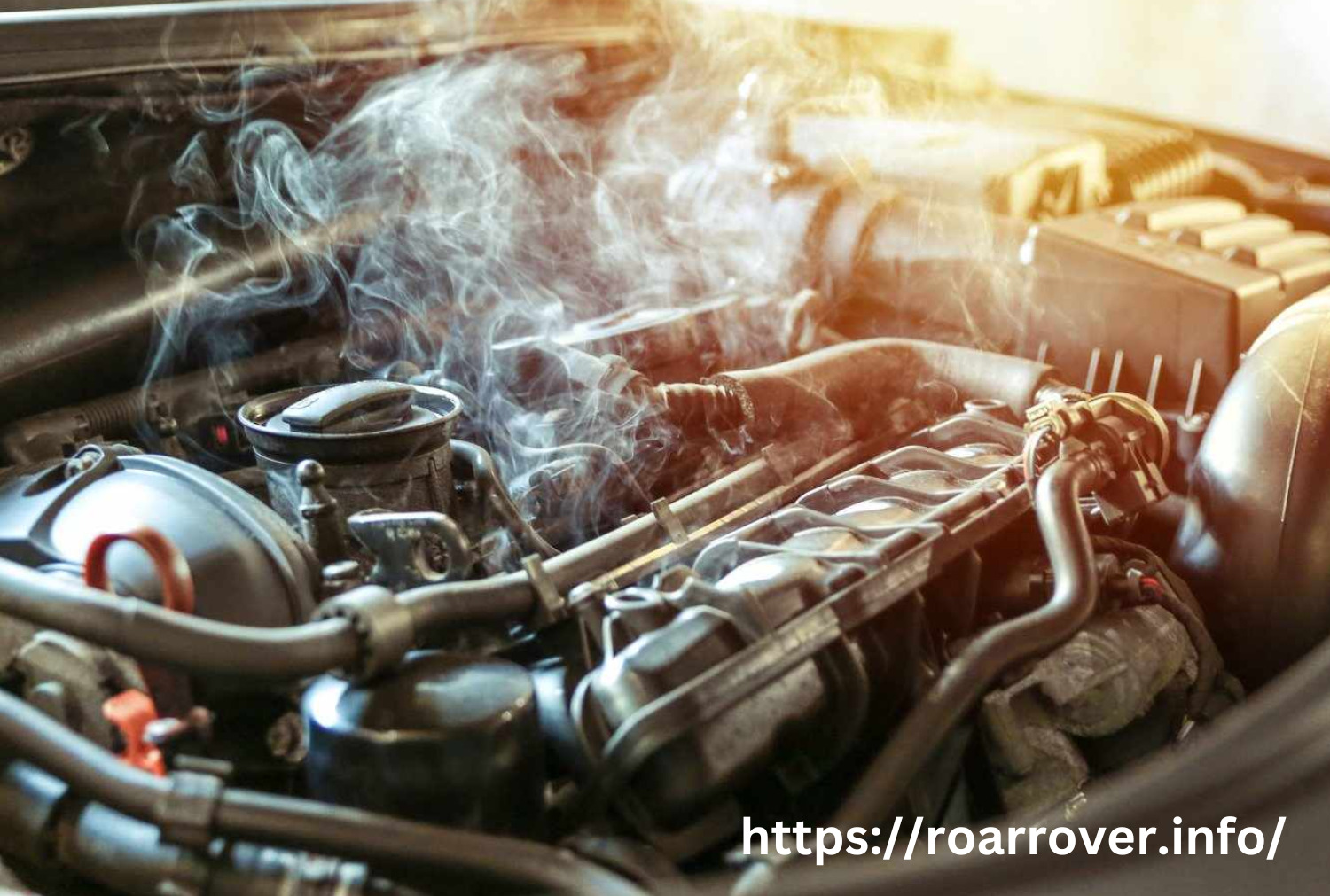
This is also a common cfmoto Uforce 1000 problem because experiencing overheating in a vehicle like that can be a concerning issue. A lack of attention to overheating can lead to engine damage and decreased performance. It’s essential to diagnose and solve the problem to ensure the vehicle operates safely and efficiently. Here’s some information about the problem and steps a simple person can take to address it:
Common Symptoms:
- Temperature Gauge: The temperature gauge on the dashboard shows the engine temperature rising above normal levels.
- Warning Lights: Overheating may trigger warning lights on the dashboard, indicating an issue.
- Steam or Smoke: You might notice steam or smoke coming from under the hood, which is a clear sign of overheating.
- Reduced Performance: The engine might lose power or exhibit poor performance due to overheating.
Possible Causes:
- Coolant Level: Low coolant levels can lead to inadequate cooling and overheating.
- Coolant Leaks: Leaks in the cooling system, such as from hoses or the radiator, can cause coolant loss and overheating.
- Faulty Thermostat: A stuck closed thermostat can prevent proper coolant circulation and cause overheating.
- Radiator Issues: A clogged radiator, damaged fins, or insufficient airflow can lead to overheating.
- Water Pump Failure: The water pump circulates coolant through the engine, and a malfunction can result in overheating.
- Cooling Fan Problems: A faulty cooling fan may not provide sufficient airflow, especially at low speeds or idle.
- Improper Fuel Mixture: A lean fuel mixture can lead to higher combustion temperatures and overheating.
Steps to Solve Overheating:
- Stop Safely: If you notice overheating symptoms, pull over to a safe location and turn off the engine. Allow it to cool before attempting any further actions.
- Check Coolant Level: Once the engine is cool, check the coolant level in the radiator and the overflow reservoir. Top up with the appropriate coolant mixture if low.
- Inspect for Leaks: Look for any visible coolant leaks under the vehicle. Address any leaks by repairing or replacing damaged components.
- Check Thermostat: If you’re comfortable, you can check the thermostat for proper operation. A mechanic may need to replace it if it’s faulty.
- Inspect Radiator and Fan: Ensure the radiator is clean and free of debris. Check the radiator fins for damage. Test the cooling fan to see if it’s functioning.
- Water Pump Inspection: If you suspect the water pump is faulty, consult a professional for diagnosis and potential replacement.
- Verify Fuel Mixture: If you’ve experienced engine performance issues, consult a mechanic to ensure the fuel mixture is appropriate.
People Also Read: Cfmoto Uforce 600 Problems
3. Cfmoto Uforce 1000 Transmission Problems
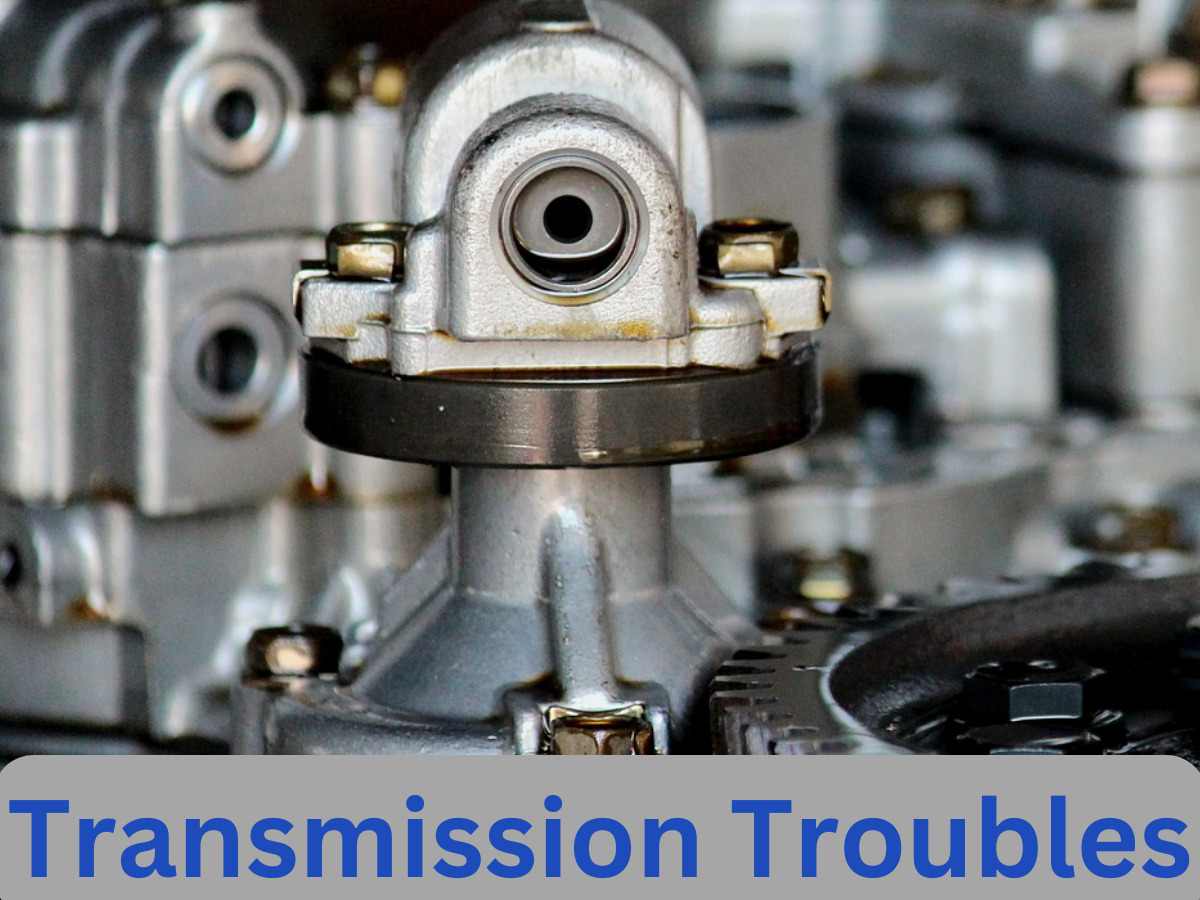
Experiencing transmission trouble in your CFMOTO Uforce 1000 can be a significant concern, as the transmission is a critical component for the vehicle’s operation. Transmission issues can manifest in various ways and may impact your ability to drive the vehicle. Here’s an overview of the problem and steps a simple person can take to address it:
Common Symptoms:
- Gear Shifting Issues: Difficulty shifting gears, including grinding or popping out of gear.
- Slipping Gears: The vehicle may unexpectedly slip out of gear while driving.
- Delayed or Harsh Shifting: Shifting between gears may be delayed or feel rough and harsh.
- Burning Smell: A burning odor, often associated with overheating transmission fluid.
- Transmission Warning Light: The transmission warning light on the dashboard may illuminate.
Possible Causes:
- Low Transmission Fluid: Low or dirty transmission fluid can lead to poor transmission performance.
- Transmission Fluid Leaks: Leaks from the transmission pan, seals, or cooler lines can cause fluid loss.
- Clutch Problems: If the vehicle has a manual transmission, clutch issues can result in shifting difficulties.
- Torque Converter Issues: A faulty torque converter can lead to slipping gears and poor performance.
- Transmission Control Module (TCM) Problems: Electronic issues with the TCM can affect shifting.
- Worn Transmission Components: Wear and tear on transmission gears, bearings, or synchronizers can lead to trouble.
- Clogged Transmission Filter: A clogged filter can restrict fluid flow and affect performance.
Steps to Solve Transmission Trouble:
- Check Transmission Fluid: Locate the transmission dipstick (automatic transmission) or fill plug (manual transmission) and check the fluid level. If it’s low or dirty, consider changing it.
- Inspect for Leaks: Look under the vehicle for signs of transmission fluid leaks. Address any leaks by repairing or replacing damaged components.
- Manual Transmission Clutch Inspection: If you have a manual transmission and experience clutch-related issues, consult a mechanic for a clutch inspection and potential replacement.
- Torque Converter Examination: For automatic transmissions, a malfunctioning torque converter may require professional diagnosis and repair.
- Transmission Control Module (TCM): If you suspect electronic issues, consult a professional to diagnose problems with the TCM.
- Transmission Service: Consider having the transmission fluid and filter changed if it’s been a long time since the last service. This can help address shifting problems caused by dirty or worn fluid.
- Visual Inspection: Visually inspect the transmission and related components for visible damage or wear. Replace any worn parts.
- Transmission Cooler: Ensure the transmission cooler is functioning correctly, as overheating can cause transmission issues.
- By following these steps you can get rid of CF Moto Uforce 1000 transmission problems.
4. Unusual Noises
“Unusual noises” in a vehicle like the CFMOTO Uforce 1000 can be indicative of various problems, ranging from minor issues to potentially serious mechanical concerns. Diagnosing and addressing these noises is essential to maintain the vehicle’s reliability and safety. Here’s an overview of the problem and steps a simple person can take to address it:
Common Types of Unusual Noises:
- Rattling: Loose or damaged components can cause a rattling sound, often heard over bumps or during acceleration.
- Knocking or Pinging: These sounds can indicate engine problems, such as pre-ignition or detonation.
- Squeaking or Screeching: High-pitched noises, especially when braking, may suggest issues with brakes or suspension components.
- Grinding or Whining: These noises, typically heard during gear changes or while driving, could signal transmission or differential issues.
- Clicking or Tapping: Clicking sounds from the engine could be related to valve train problems, while tapping may indicate low oil pressure.
- Hissing or Whistling: Air leaks, vacuum issues, or problems with the exhaust system can cause these noises.
Possible Causes:
- Loose or Damaged Components: Loose bolts, brackets, or body panels can rattle, while damaged parts can create a variety of noises.
- Engine Problems: Engine-related issues, such as misfires or worn-out components, can lead to knocking or tapping sounds.
- Brake and Suspension Problems: Worn brake pads, damaged rotors, or worn suspension bushings can cause squeaking or screeching.
- Transmission or Differential Issues: Grinding or whining noises can originate from problems within the transmission or differential.
- Exhaust System Leaks: Hissing or whistling sounds may occur due to leaks or loose components in the exhaust system.
Steps to Solve Unusual Noises:
- Identify the Source: Try to pinpoint the location and circumstances under which the noise occurs. This can help you determine the likely source of the problem.
- Visual Inspection: Conduct a visual inspection of the vehicle’s exterior and undercarriage. Look for loose or damaged components, such as body panels, brackets, and exhaust parts.
- Check Engine Area: If the noise is coming from the engine, inspect the engine bay for loose belts, hoses, or other components. Check the oil level as well.
- Inspect Brakes and Suspension: For squeaking or screeching noises, examine the condition of the brakes, including the pads and rotors. Inspect suspension components for wear or damage.
- Transmission and Differential Inspection: If you hear grinding or whining, consult a professional mechanic for a transmission and differential inspection.
- Exhaust System: Look for visible damage or loose connections in the exhaust system. A hissing or whistling noise may indicate an exhaust leak.
5. Fuel System Hiccups
Experiencing “fuel system hiccups” in a vehicle like the CFMOTO Uforce 1000 can result in poor engine performance, stalling, and other issues related to fuel delivery. These hiccups may be caused by a variety of factors within the fuel system. Here’s an overview of the problem and steps a simple person can take to address it:
Common Symptoms:
- Stalling: The engine might stall or shut off unexpectedly, especially during acceleration or idling.
- Hesitation: The vehicle may hesitate or jerk when you press the gas pedal.
- Poor Performance: Reduced power and sluggish acceleration can result from fuel delivery problems.
- Rough Idling: The engine may run unevenly or roughly when at a standstill.
- Surging: Inconsistent or fluctuating engine speed, even without pressing the accelerator.
Possible Causes:
- Fuel Quality: Poor quality or contaminated fuel can lead to fuel system issues.
- Clogged Fuel Filter: A blocked fuel filter can restrict fuel flow and cause hiccups.
- Fuel Pump Problems: A failing or weak fuel pump can lead to inadequate fuel delivery.
- Fuel Injector Issues: Dirty or malfunctioning fuel injectors can disrupt fuel spray patterns.
- Vacuum Leaks: Air leaks in the intake manifold or vacuum hoses can affect the fuel mixture.
- Throttle Position Sensor (TPS): A faulty TPS can cause hesitation during acceleration.
Steps to Solve Fuel System Hiccups:
- Check Fuel Quality: Ensure you’re using high-quality fuel from a reputable station.
- Inspect Fuel Filter: Locate the fuel filter and inspect it for clogs or signs of debris. Replace if necessary.
- Listen for Fuel Pump: When you turn the ignition to the “On” position (without starting the engine), listen for a faint buzzing noise coming from the fuel tank. This indicates the fuel pump is working.
- Check Fuel Pressure: Consult a mechanic or use a fuel pressure gauge to check if the fuel pressure is within the specified range.
- Clean Fuel Injectors: You can use fuel injector cleaner additives or have the injectors professionally cleaned.
- Inspect Vacuum Hoses: Visually inspect the vacuum hoses for cracks or disconnections. Repair or replace damaged hoses.
- Throttle Position Sensor (TPS) Test: If you suspect TPS issues, consult a mechanic to test and potentially replace the sensor.
Preventive Measures:
- Regular Maintenance: Follow the manufacturer’s recommended maintenance schedule, including fuel system inspections and cleaning.
- Fuel Additives: Use high-quality fuel additives to keep the fuel system clean.
- Fuel Filter Replacement: Regularly replace the fuel filter based on the manufacturer’s recommendations.
If you’re not comfortable diagnosing or addressing the issue yourself, it’s advisable to seek the help of a qualified mechanic or dealership. Fuel system issues can lead to poor engine performance and potential damage, so addressing the problem promptly is crucial to maintaining the proper operation of your CFMOTO Uforce 1000.
6. Braking Issues
This is the main cfmoto Uforce 1000 problem because experiencing braking issues can be extremely dangerous, as brakes are a critical component for vehicle safety. Addressing braking problems promptly is essential for your safety and the safety of others on the road. Here’s an overview of the problem and steps a simple person can take to address it:
Common Symptoms:
- Spongy or Soft Brake Pedal: The brake pedal feels soft or spongy and requires more effort to engage the brakes.
- Brake Noise: Unusual noises such as grinding, squealing, or scraping when applying the brakes.
- Vibration or Pulsation: The brake pedal or steering wheel vibrates or pulses when you brake.
- Reduced Braking Power: The vehicle takes longer to stop, or you need to press the pedal harder.
- Brake Warning Light: The brake warning light on the dashboard may illuminate.
Possible Causes:
- Brake Fluid Leak: Leaks in the brake lines or calipers can lead to a loss of brake fluid and reduced braking power.
- Worn Brake Pads or Shoes: Over time, brake pads or shoes can wear down and reduce braking effectiveness.
- Brake Rotor or Drum Issues: Warped or unevenly worn rotors or drums can cause vibrations and reduced braking power.
- Brake Caliper Problems: Stuck or malfunctioning calipers can cause uneven braking or excessive wear on one side.
- Brake Fluid Contamination: Contaminated brake fluid can affect brake performance and cause corrosion.
- Brake Master Cylinder Issues: A failing master cylinder can lead to a soft brake pedal and reduced braking power.
Steps to Solve Braking Issues:
- Check Brake Fluid: Locate the brake fluid reservoir under the hood and check the fluid level. If it’s low, top it up with the recommended brake fluid.
- Inspect for Leaks: Visually inspect the brake lines, calipers, and wheel cylinders for signs of brake fluid leaks. Address any leaks immediately.
- Brake Pad/Shoe Inspection: Inspect the brake pads or shoes for wear. If they’re worn beyond the recommended thickness, replace them.
- Check Rotors/Drums: Examine the brake rotors (disc brakes) or drums (drum brakes) for uneven wear or damage. Replace if necessary.
- Caliper Examination: Ensure the brake calipers are functioning properly and not sticking. Replace if needed.
- Check Brake Fluid Quality: If the brake fluid appears dirty or contaminated, consider flushing the brake system and replacing the fluid.
- Brake Bleeding: If the brake pedal feels spongy, bleeding the brake lines can help remove air bubbles and restore proper pedal feel.
- Brake Master Cylinder: If the brake pedal is consistently soft, consult a mechanic to inspect the master cylinder.
Read more about it Cf Moto Brake system Problems
7. Cfmoto Uforce 1000 shifting problems
Let’s talk about the shifting problems reported by UForce 1000 owners and find solutions:
Jerky Ride Due to Poor Throttle Response:
- Issue: Some UForce 1000 owners feel the ride is jerky due to poor throttle response, especially at low speeds.
- Cause: This could be because of issues in components like the Electronic Control Unit (ECU), clutch, and gas pedal spring pressure.
- Solution: Consider having your stock ECU reprogrammed by companies like Main Street Cycle for a smoother ride and improved performance.
Hard Shifting and Gears Grinding:
- Issue: Shifting gears can be difficult, and there might be grinding in the transmission.
- Cause: Often, the problem is in the shift linkage.
- Solution: Check and adjust the clutch lever for the right amount of free play. Inspect the clutch cable for damage.
Inaccurate Speedometer and Odometer:
- Issue: The speedometer or odometer may not show accurate readings.
- Solution: Check sensor connections, clean them, and ensure the wiring is intact. If needed, seek professional advice for further diagnostics.
Stiff Brakes:
- Issue: Stiff brakes can impact stopping power and safety.
- Solution: Regularly check brake pads, fluid levels, and calipers. Lubricate moving parts as necessary.
Excessive Heat in the Cab and Under the Seats:
- Issue: Some UForce 1000 models may get too hot, making the cabin uncomfortable.
- Solution: Check the cooling system, ensure proper airflow, and consider adding heat shields or insulation.
8. Cmoto Uforce 1000 Clutch Problems
Let’s dive into common clutch problems that UForce 1000 owners have reported and discuss how to fix them:
Clutch Acting Jerky When Starting: Many UForce 1000 owners notice their clutch acting jerky, especially when starting from a stop, either moving forward or in reverse.
- Cause: The factory clutch in UForce 1000 tends to cause this problem.
- Solution: Here’s what you can do:
- Check Clutch Components: Keep an eye on clutch parts like plates, pressure plates, and springs for wear, damage, or misalignment.
- Adjust Clutch Engagement: Make sure the clutch lever has the right amount of free play for smoother engagement.
- Lubricate Moving Parts: Applying lubrication to moving parts in the clutch assembly reduces friction and makes things smoother.
- Explore Aftermarket Clutch Kits: Some companies offer clutch kits designed to improve performance. Upgrading to a quality kit might give you a smoother ride.
Belt and Clutch Issues: Some UForce 1000 owners face problems with the drive belt and clutch system.
- Symptoms: Look out for signs like belt slipping, odd clutch noises, or trouble shifting gears.
- Solution: Regularly check and adjust belt tension to prevent slipping. Proper tension keeps the clutch working well. If you notice strange noises or difficulties, it’s wise to consult a professional mechanic for a thorough check.
- By following these steps you can easily get rid of Cfmoto Uforce 1000 belt problems.
2023,24 Cfmoto Uforce 1000 Top Speed
The 2023 CFMoto UForce 1000’s top speed can vary depending on several factors, including:
Driving mode: The UForce 1000 has three driving modes: Normal, Work, and Sport. In Normal mode, the top speed is around 60 MPH, while in Work mode it can reach up to 65-70 MPH. Sport mode is generally not recommended for sustained high speeds due to safety concerns.
Conclusion:
So here we tell the most common cfmoto uforce 1000 problems with their easy solutions. If you encounter any problem with your ATV, you solve it easily and make your offroad adventure memorable.
FAQs About Cf Moto Uforce 1000 problems
Here are a few FAQs about the CF Moto 1000 problems.
Where is CFMOTO made?
CFMOTO is a Chinese motorcycle and ATV (all-terrain vehicle) manufacturer. The company is based in China, and its production facilities are primarily located in Hangzhou, Zhejiang Province, China.
What is the CFMOTO warranty?
CFMOTO understands the importance of a reliable warranty to ensure your peace of mind. Here’s what you need to know about their warranty coverage:
For Off-Road Vehicles (ATVs and UTVs):
- All brand-new CFMOTO off-road vehicles are supported by a thoughtful one-year warranty.
- In the crucial initial 30 days, this warranty takes care of essentials like the battery, spark plugs, air filters, oil, and fuel filters.
For Motorcycles:
- CFMOTO motorcycles boast a reassuring two-year limited warranty.
- Keep in mind that the Papio model comes with a solid one-year limited warranty.

